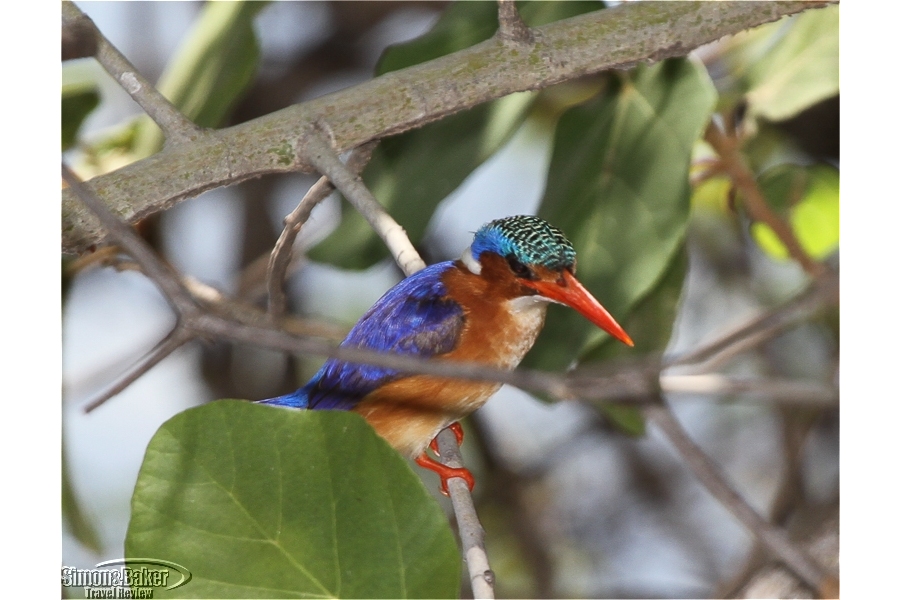
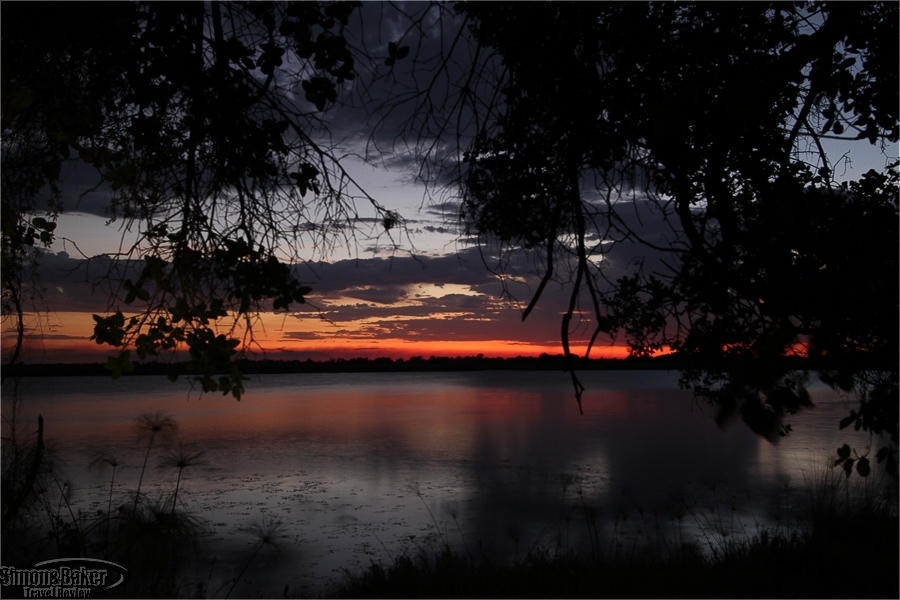
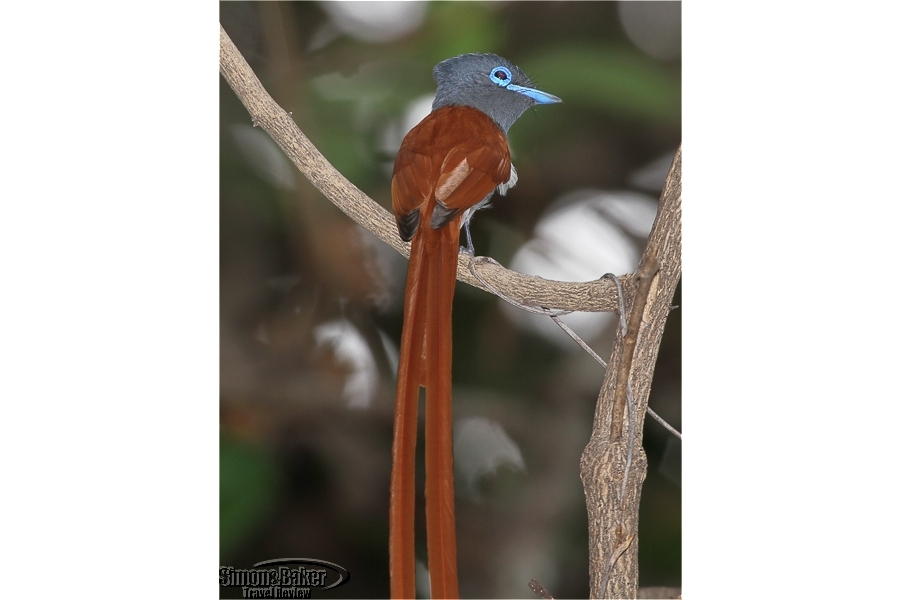

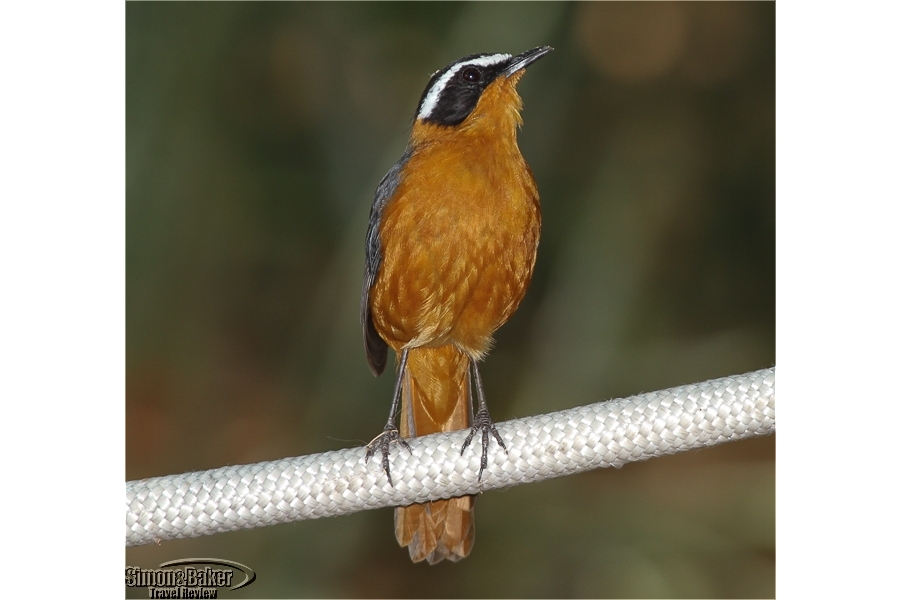
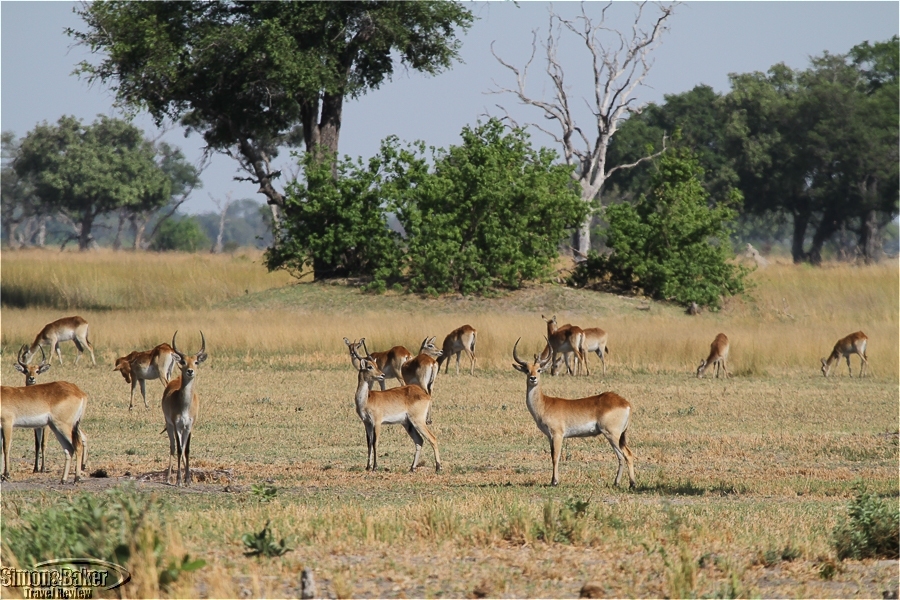
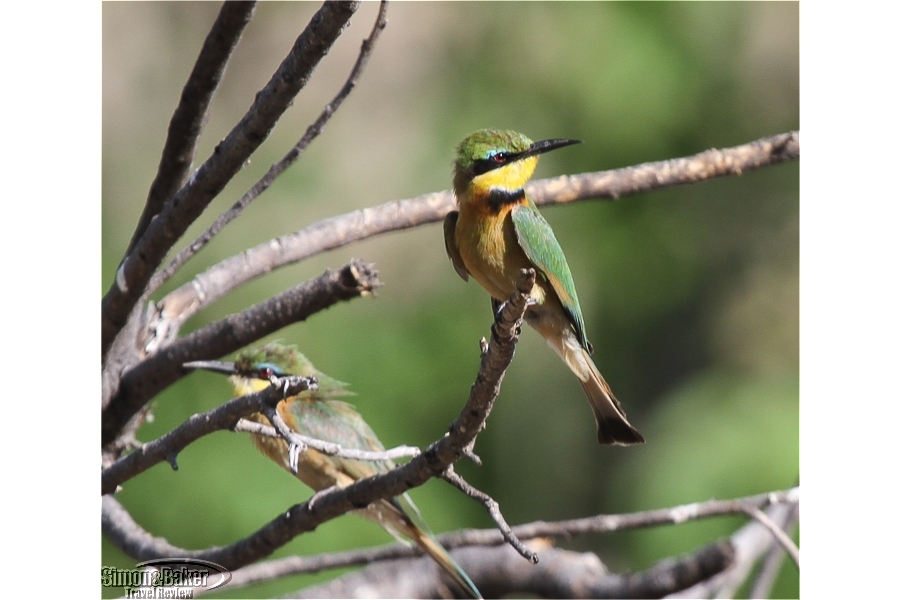
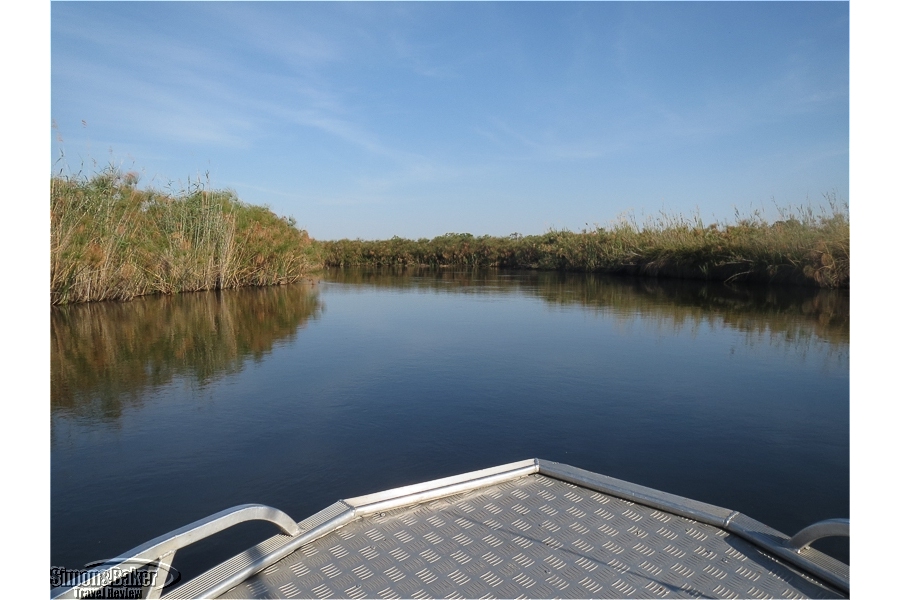
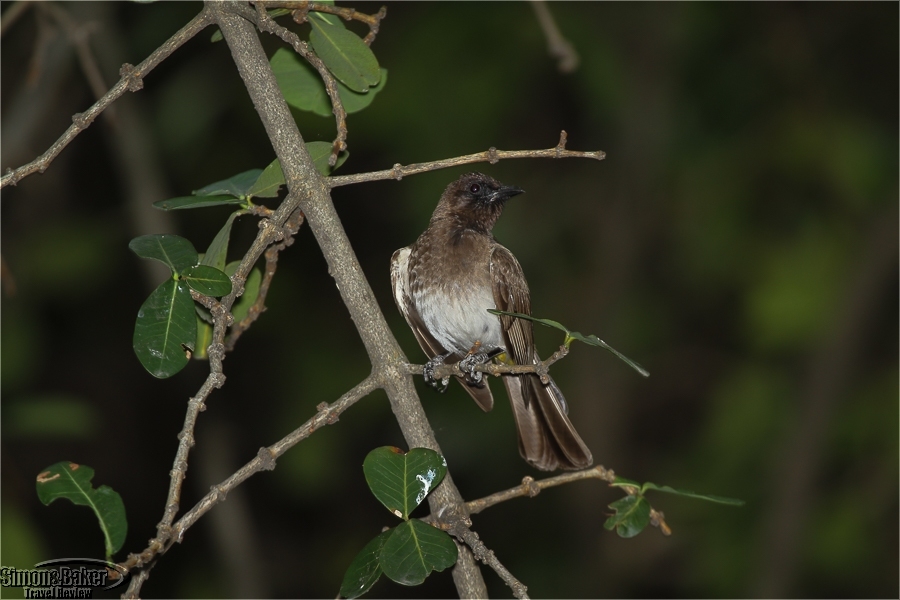
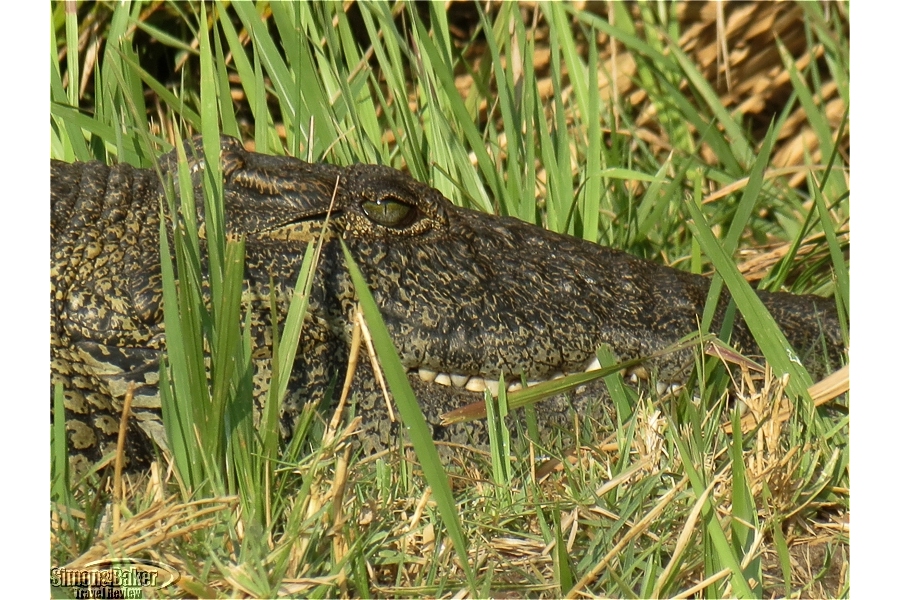
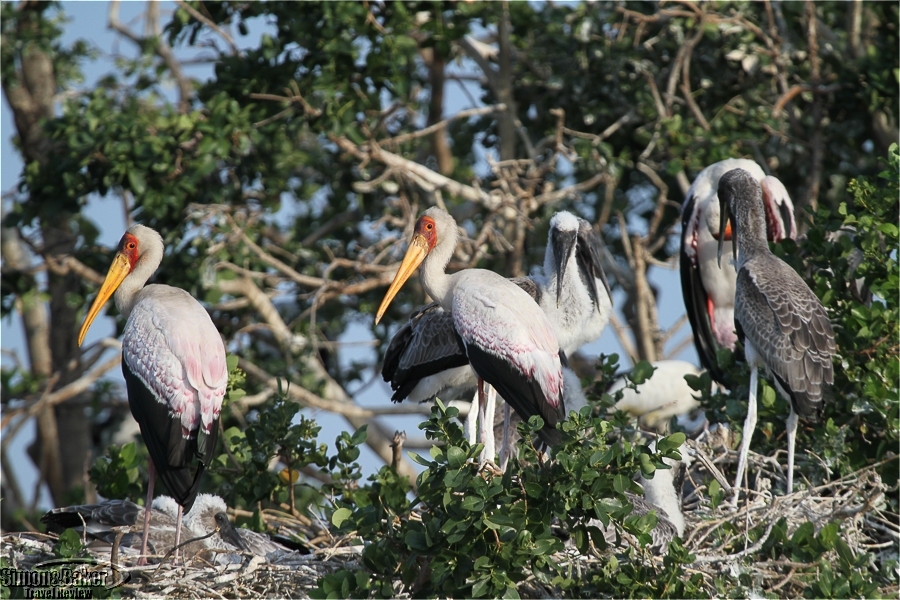
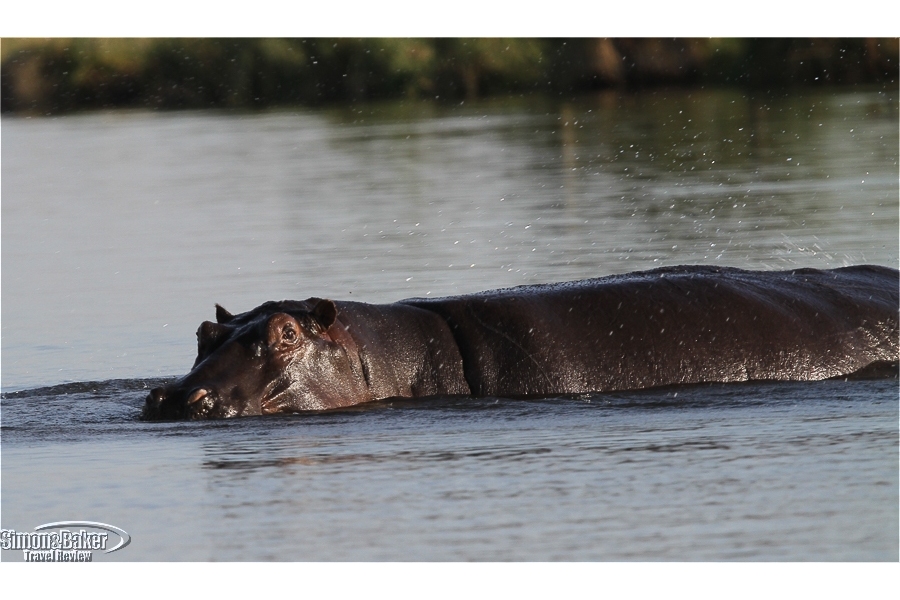
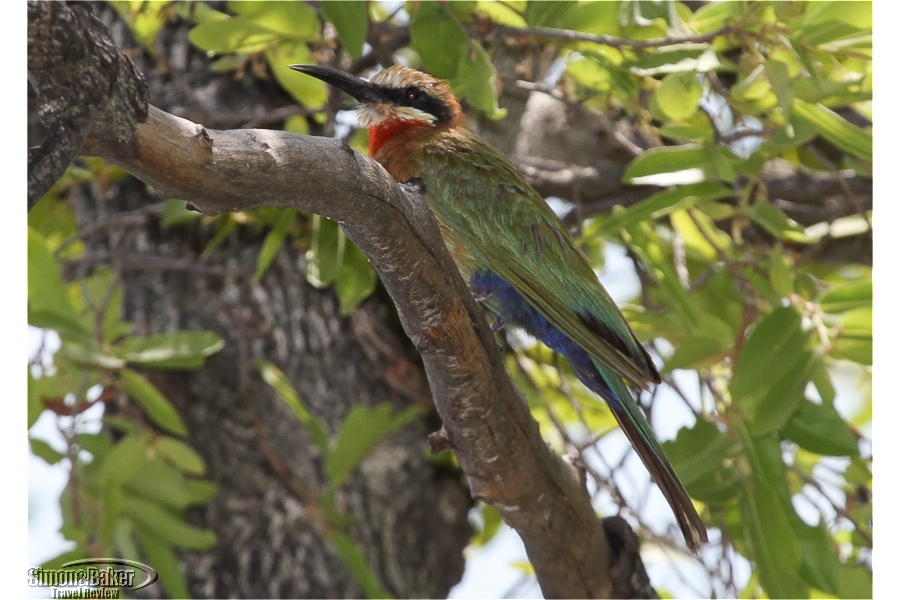
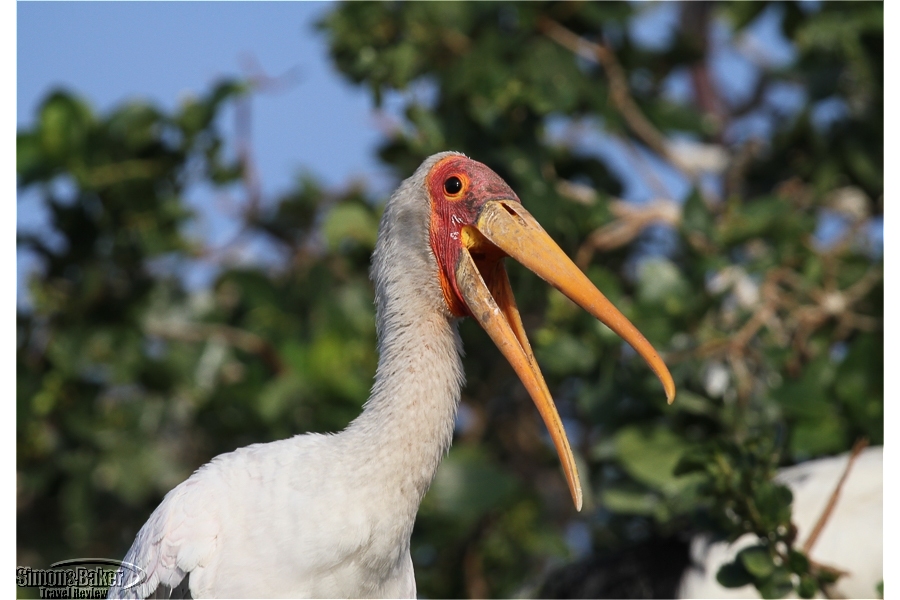
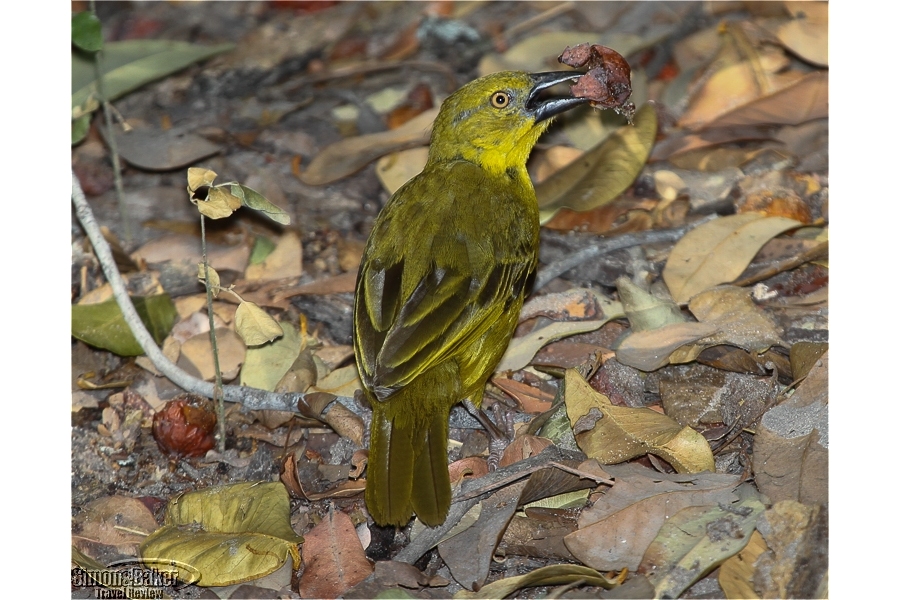
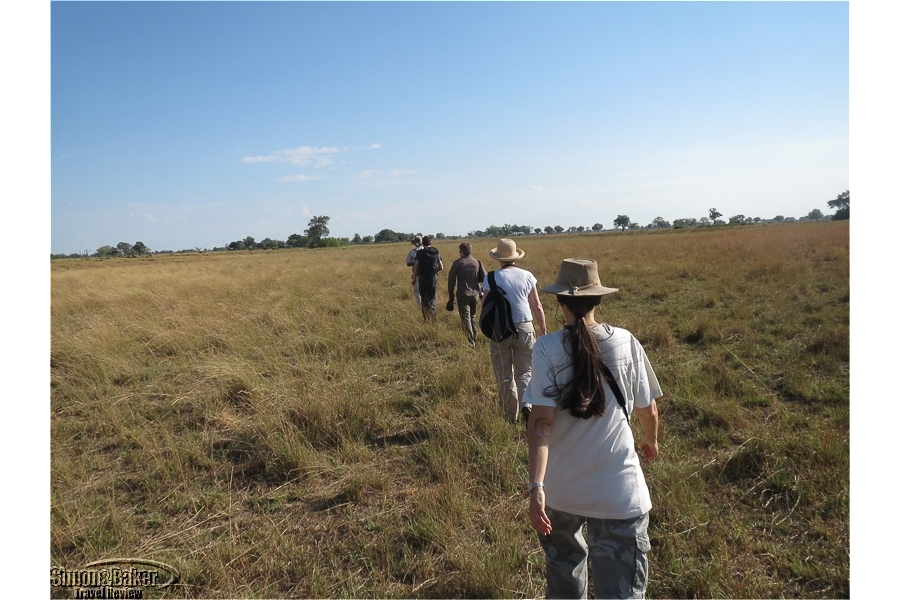
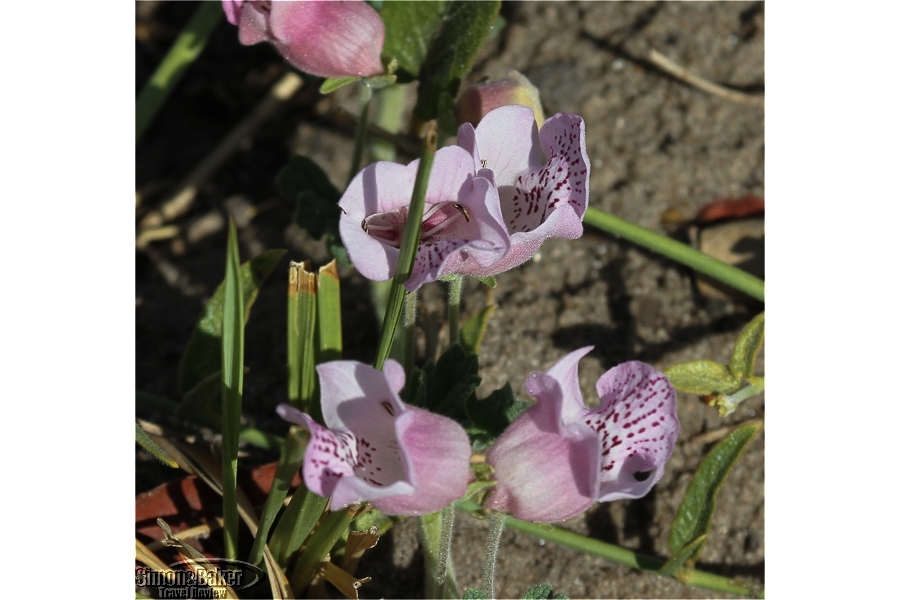
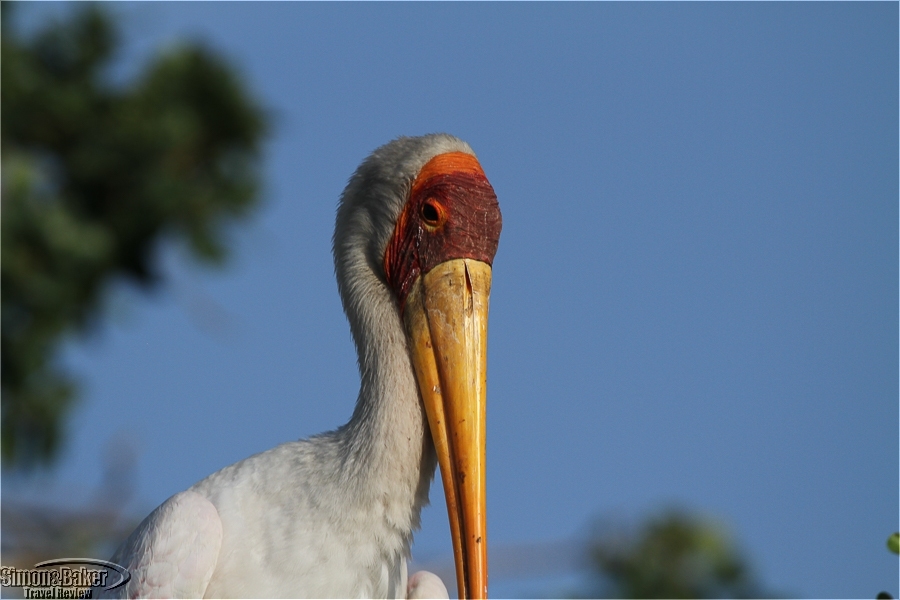
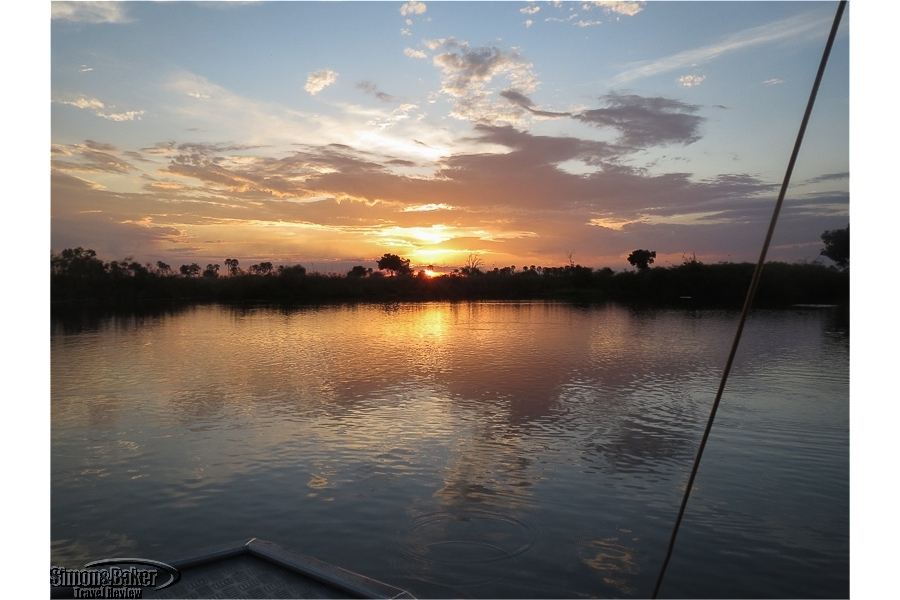
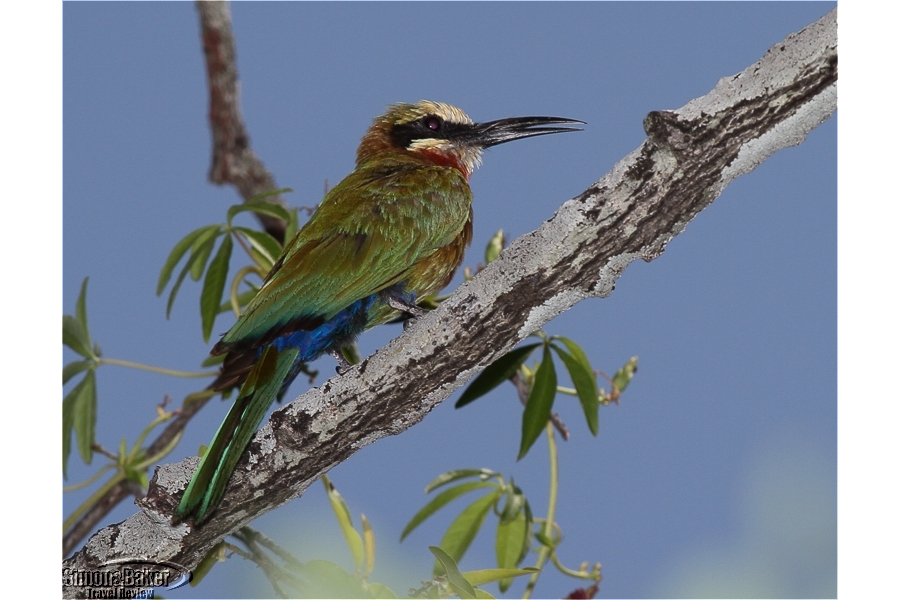
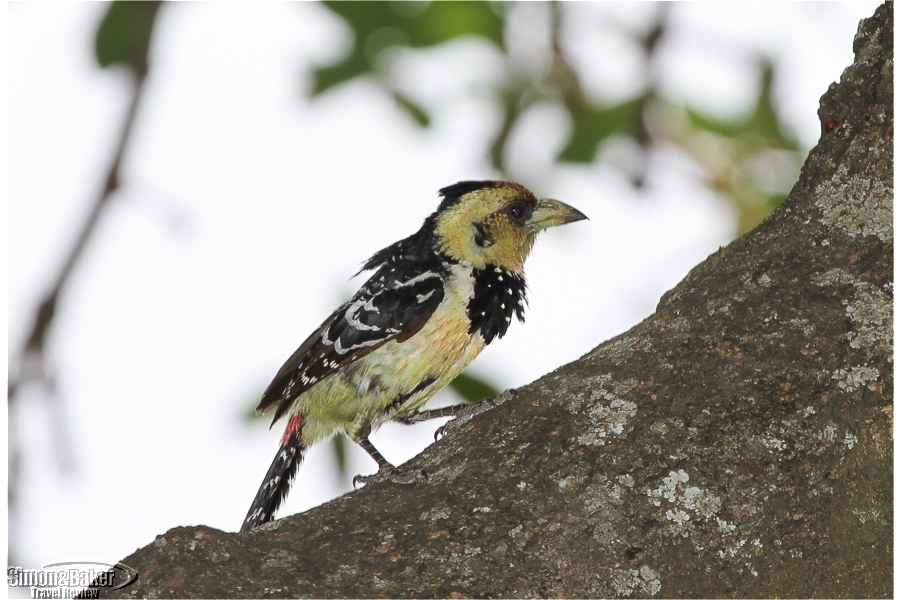
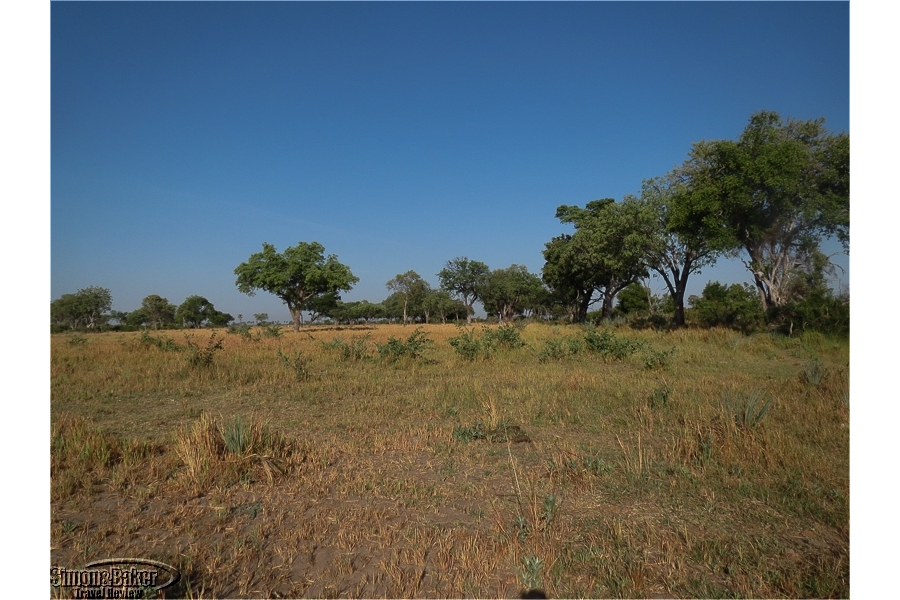
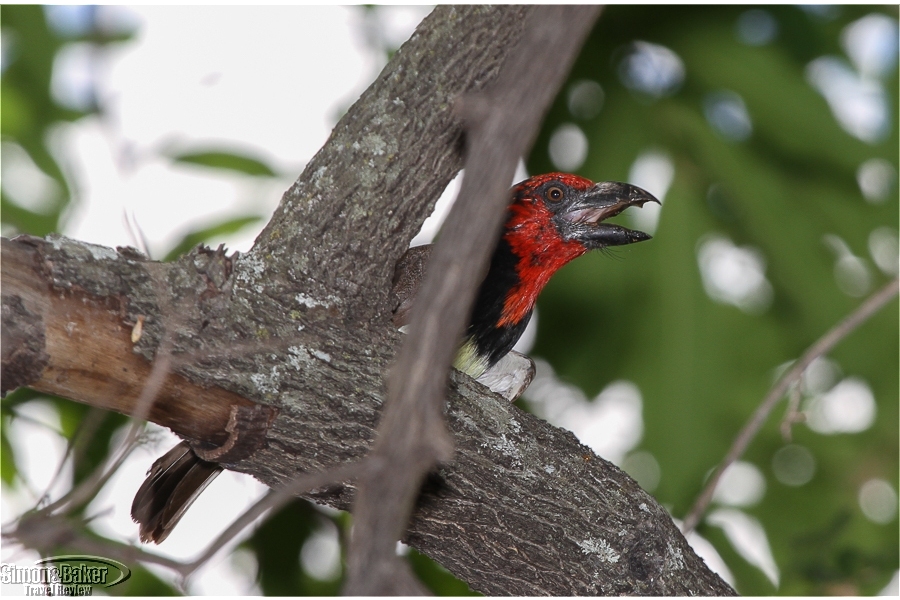
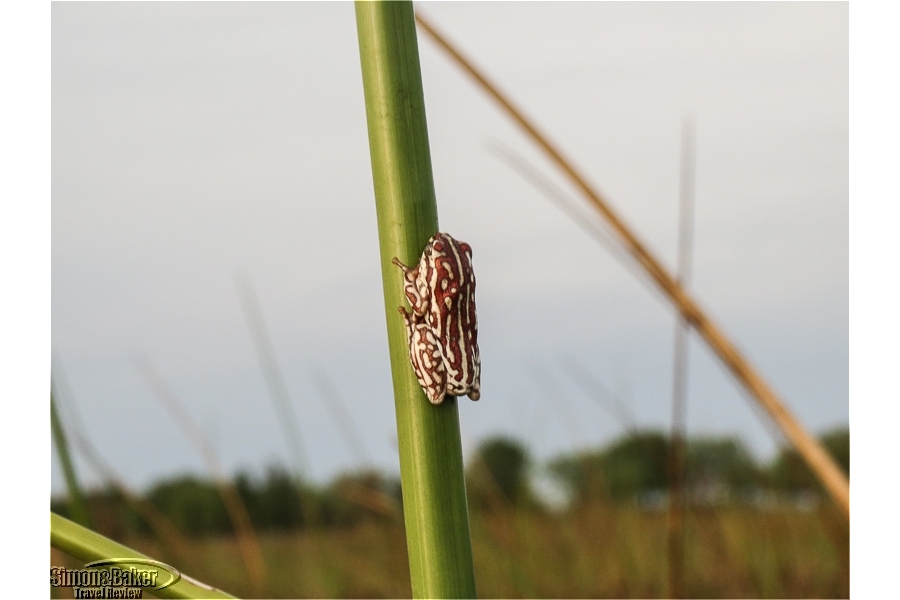
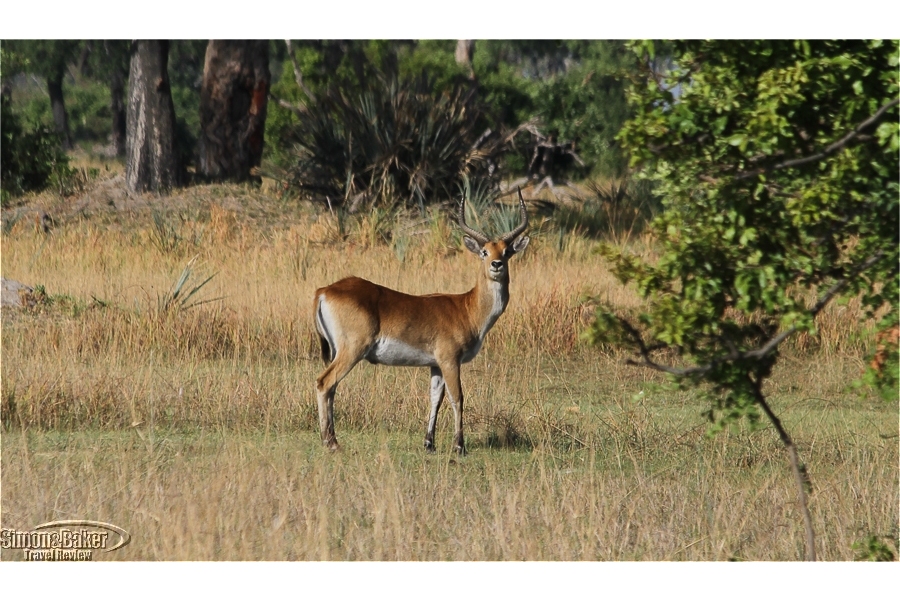
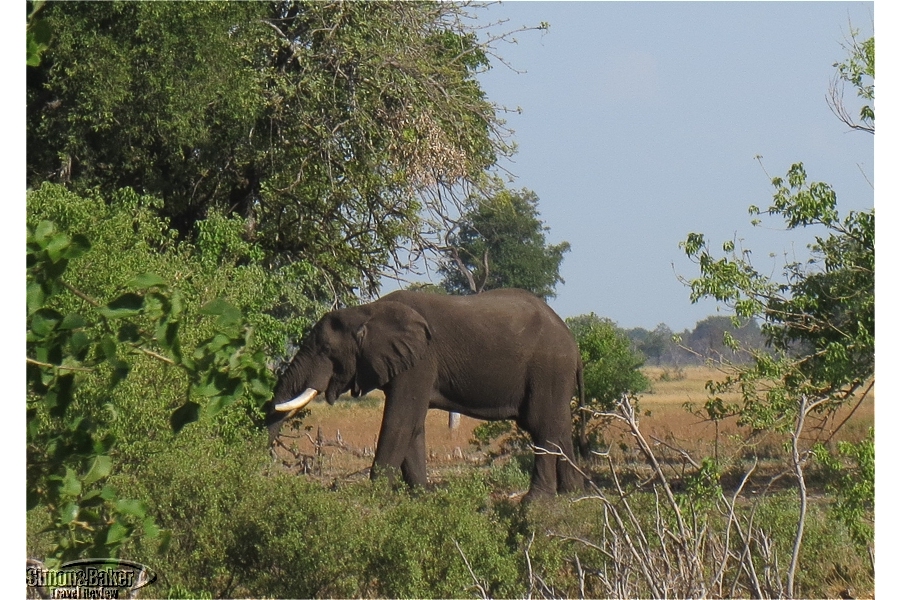
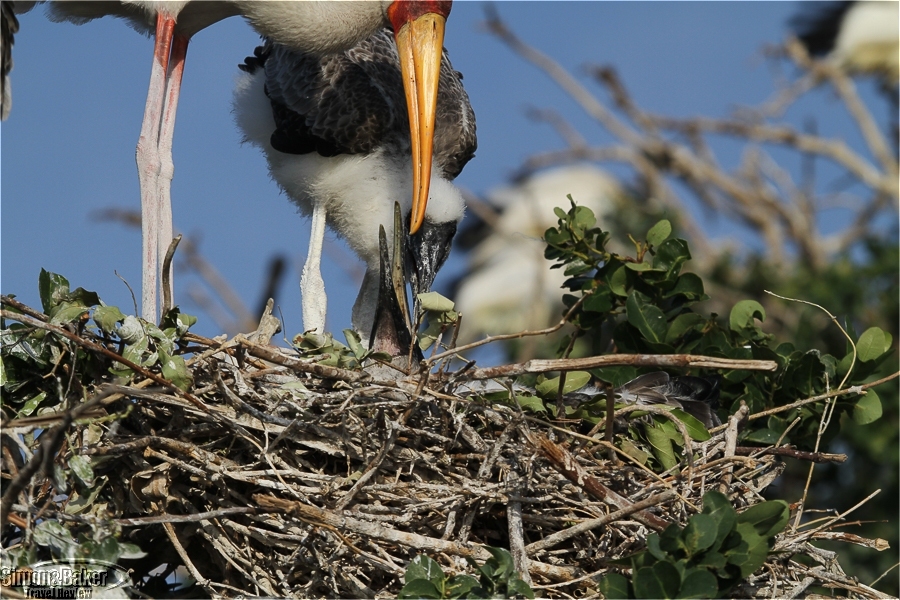
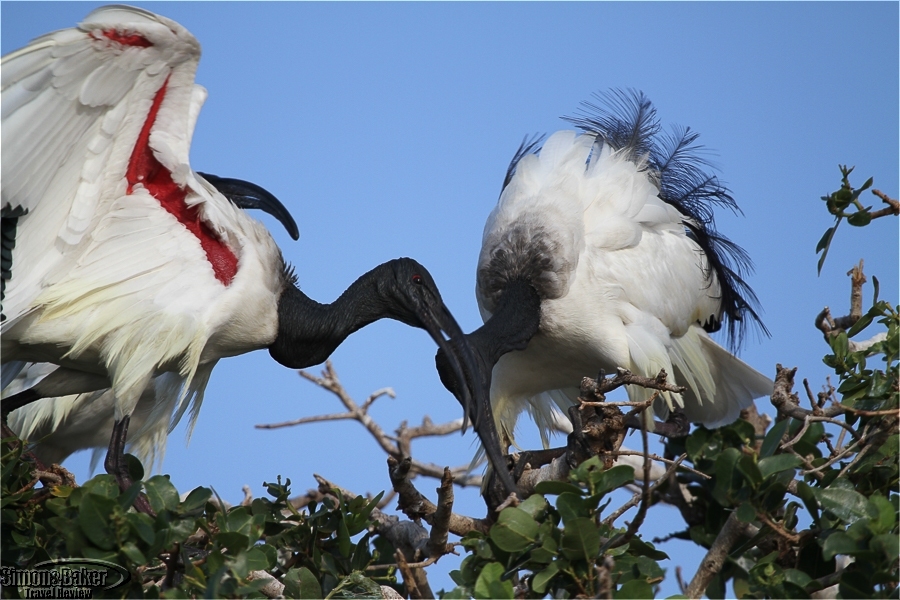
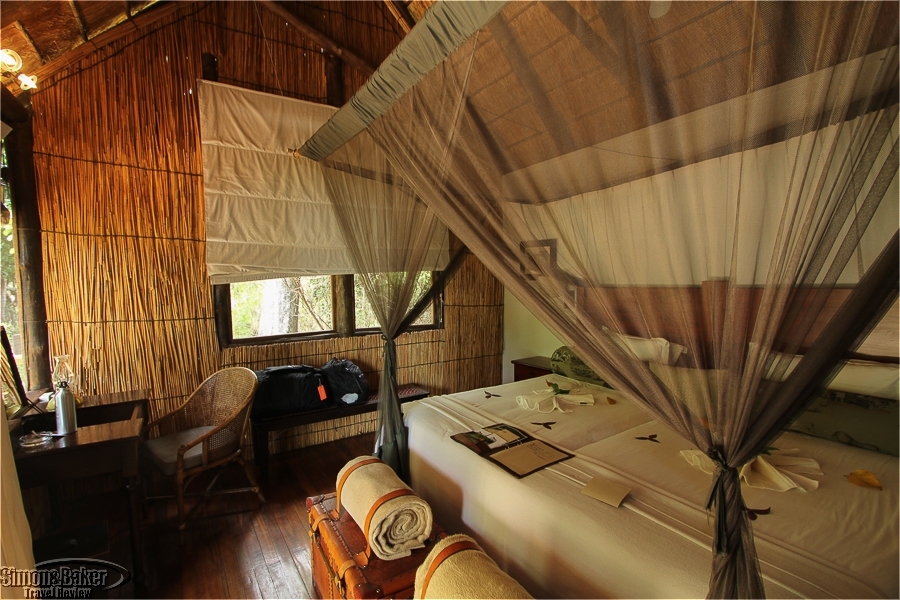

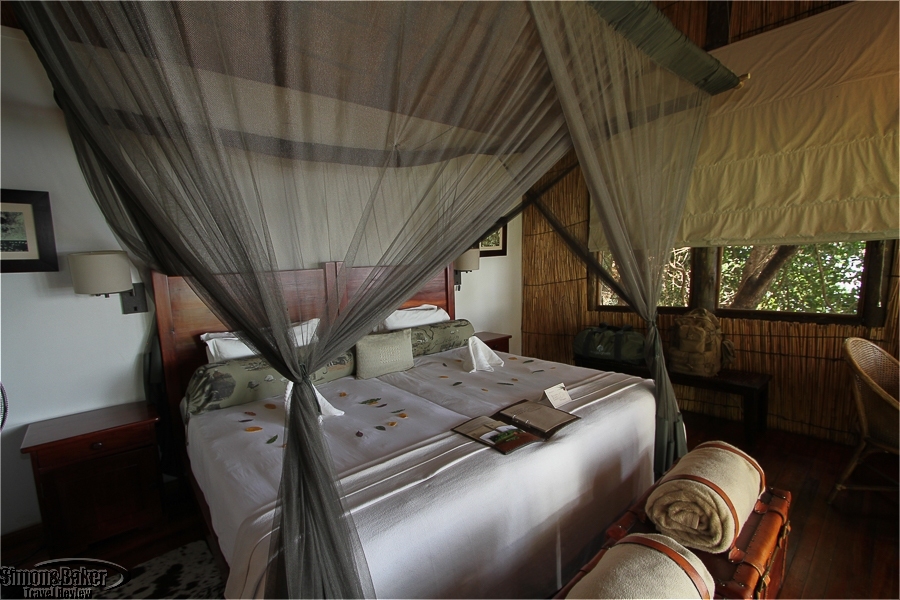
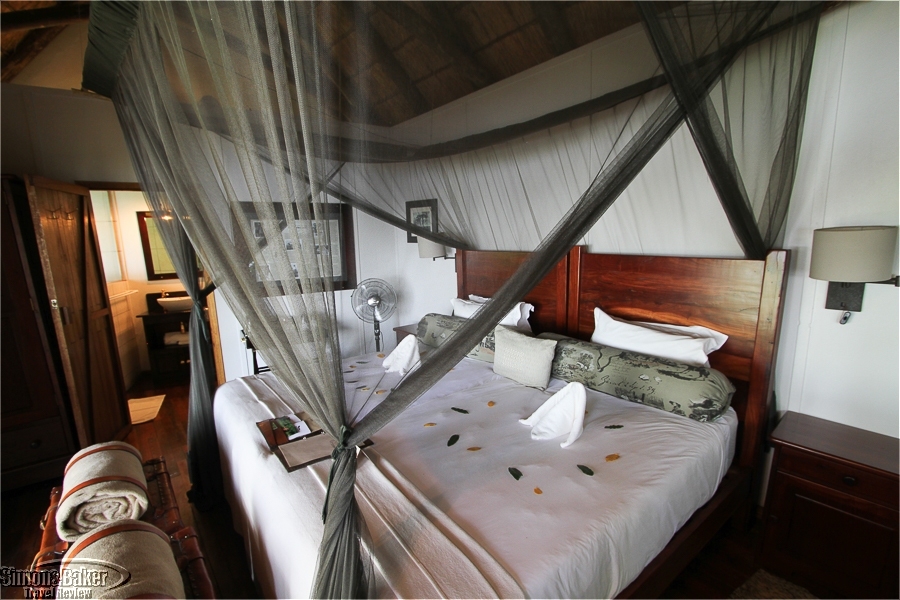
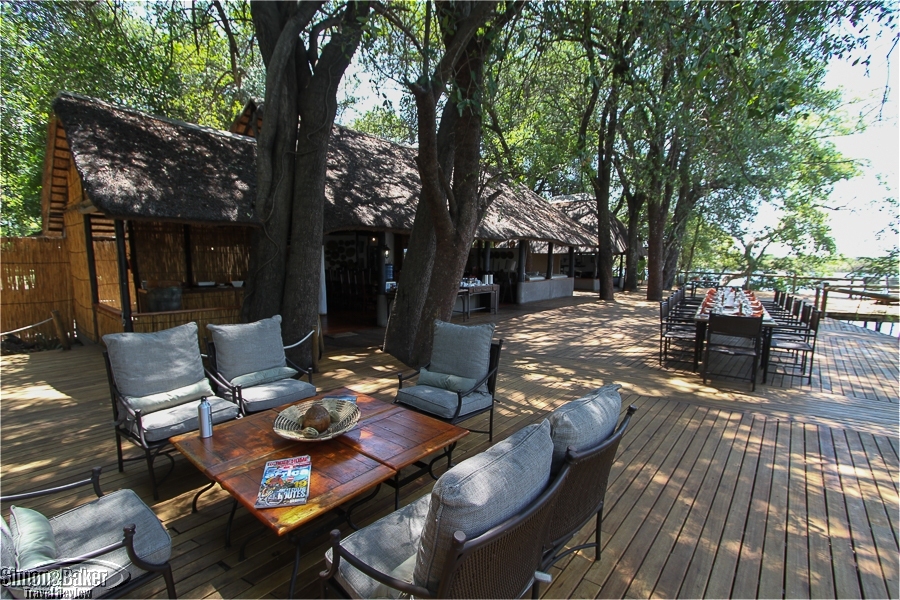
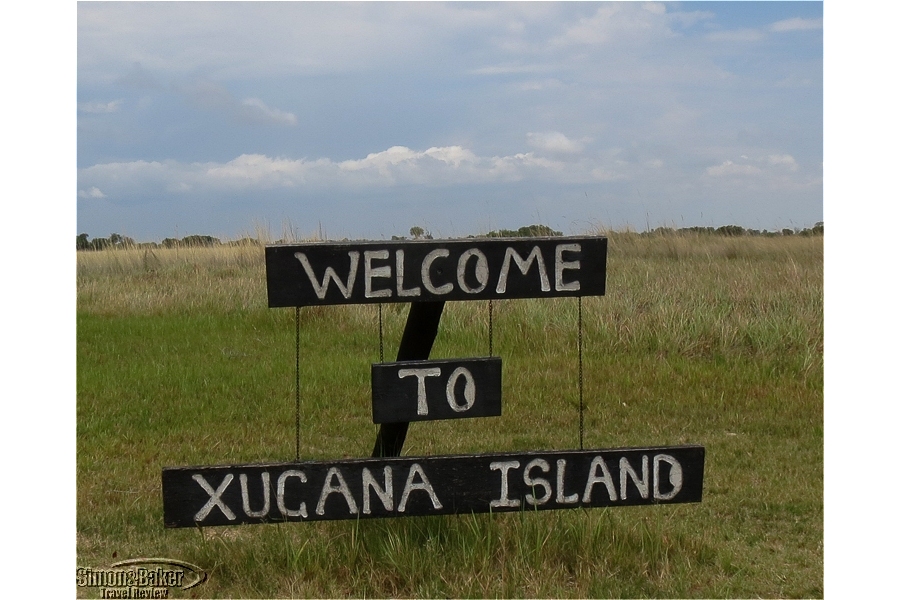

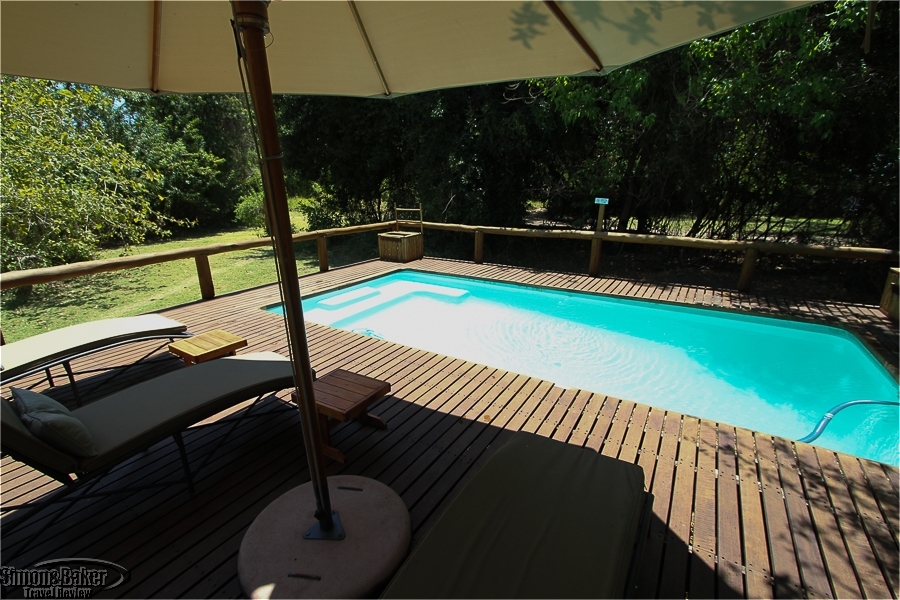
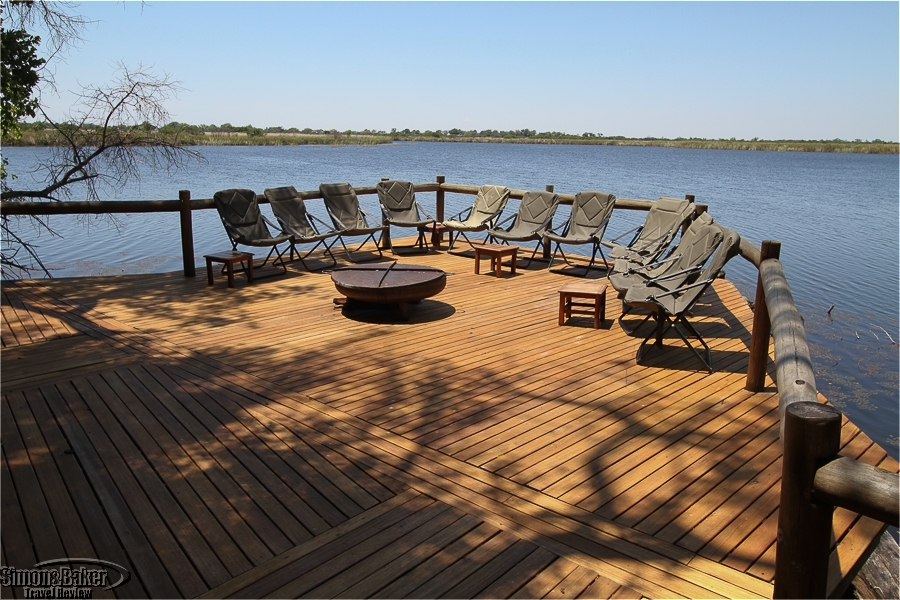
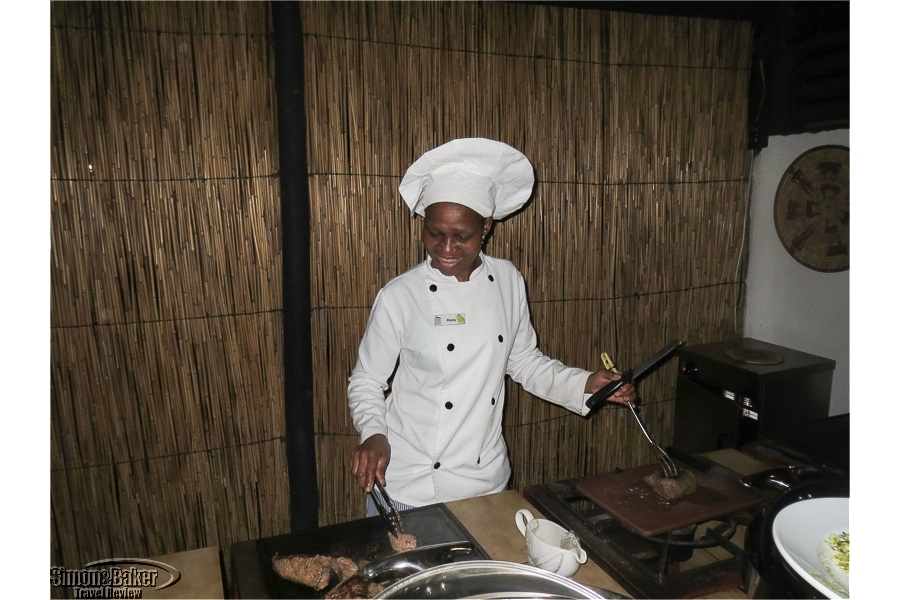
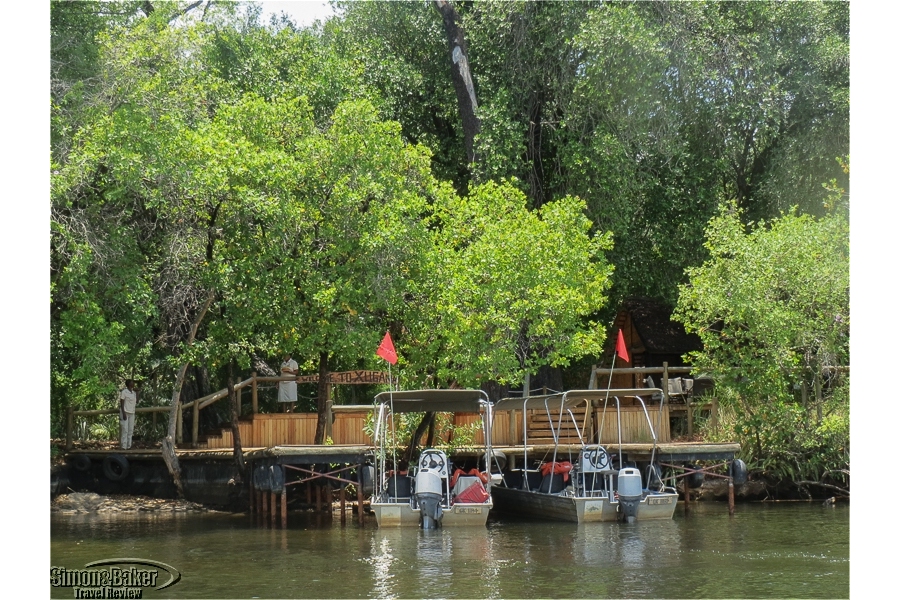
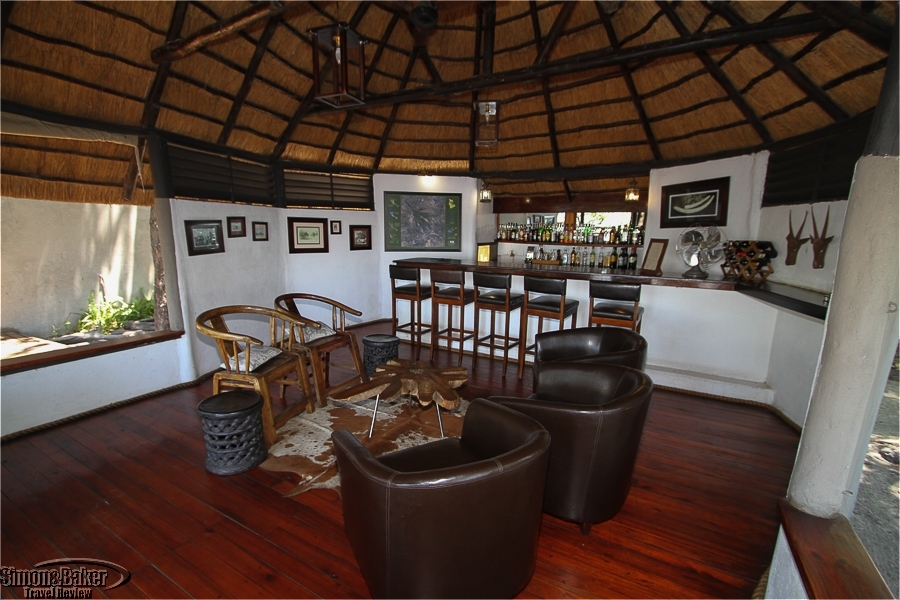
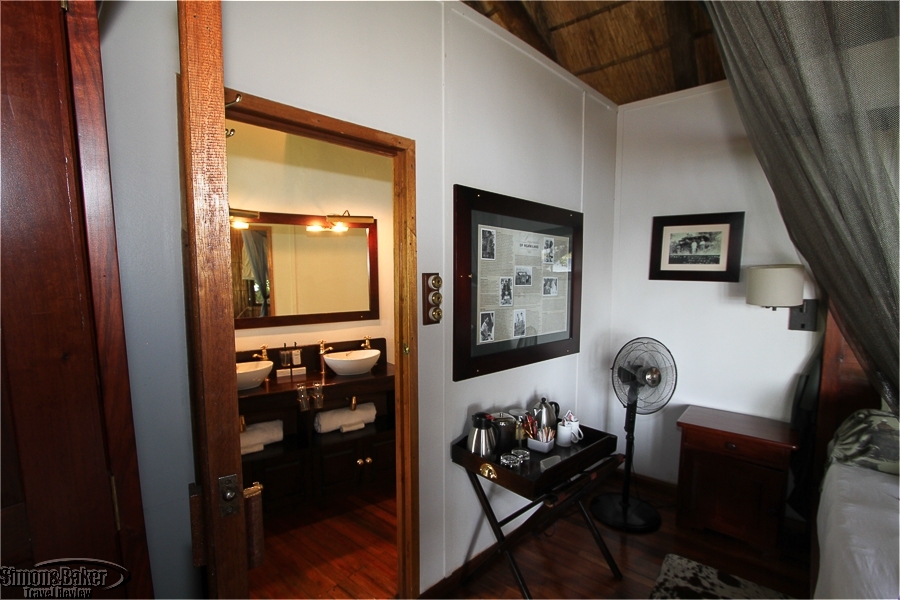
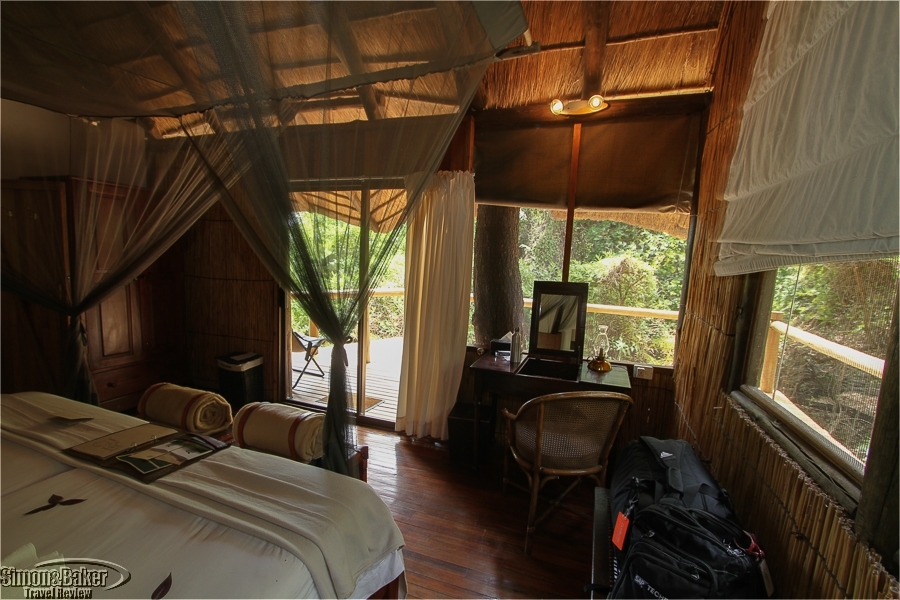
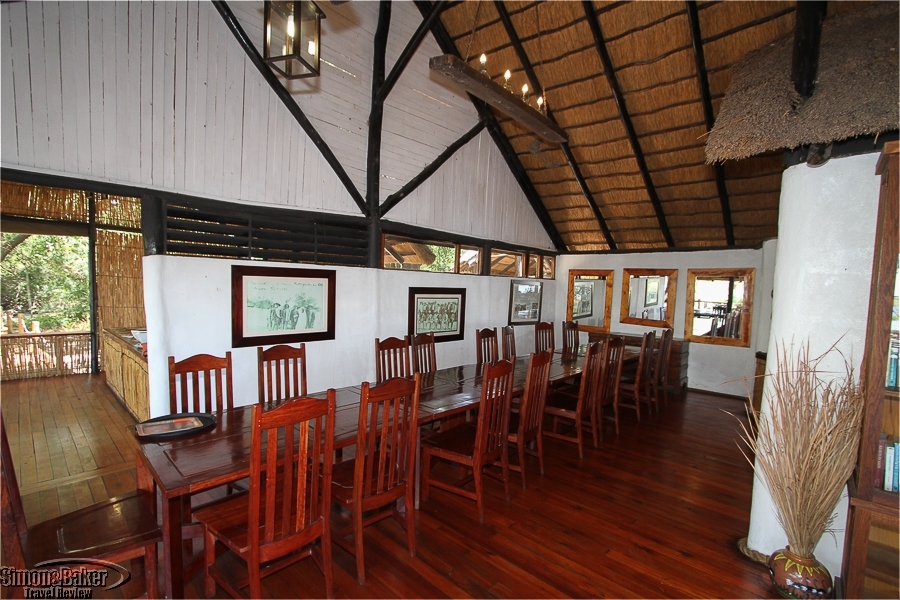

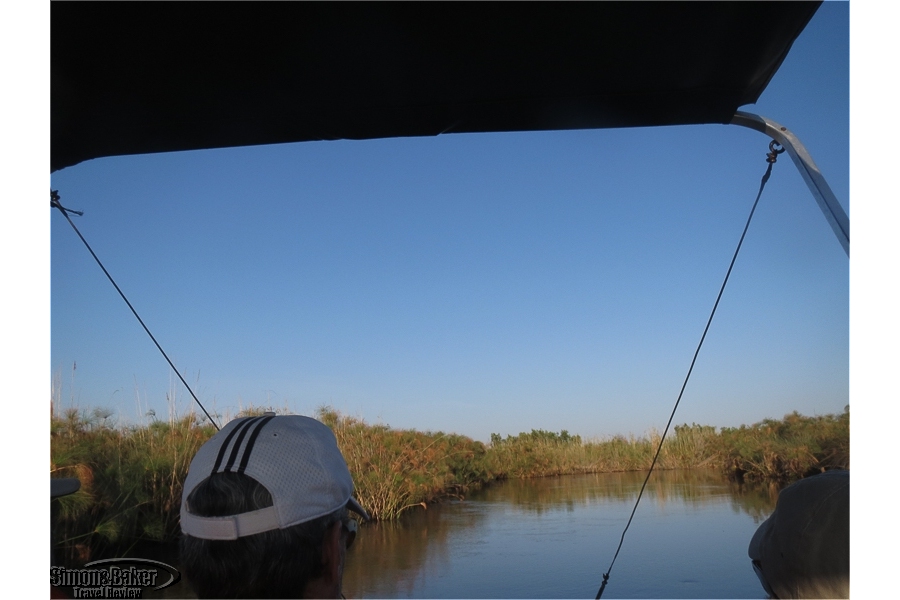

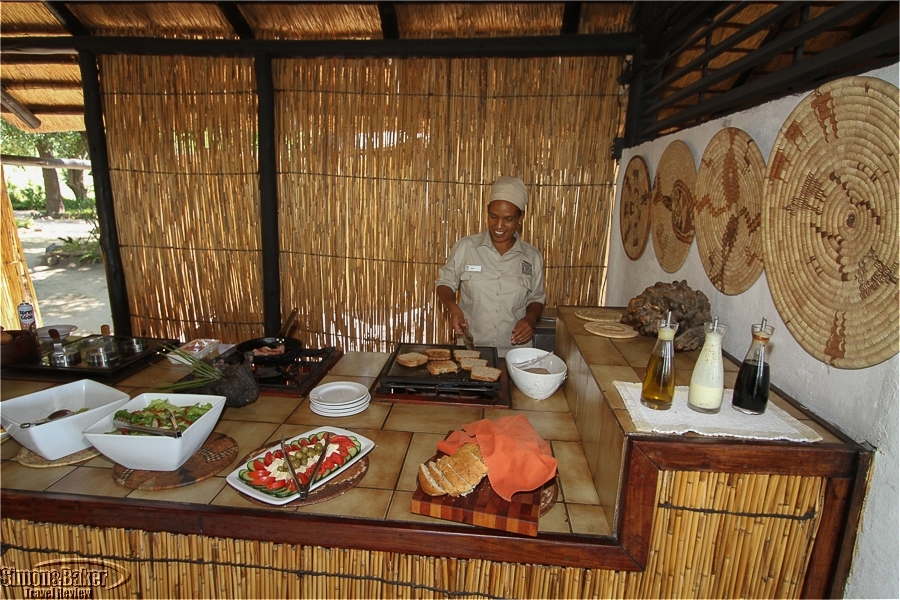
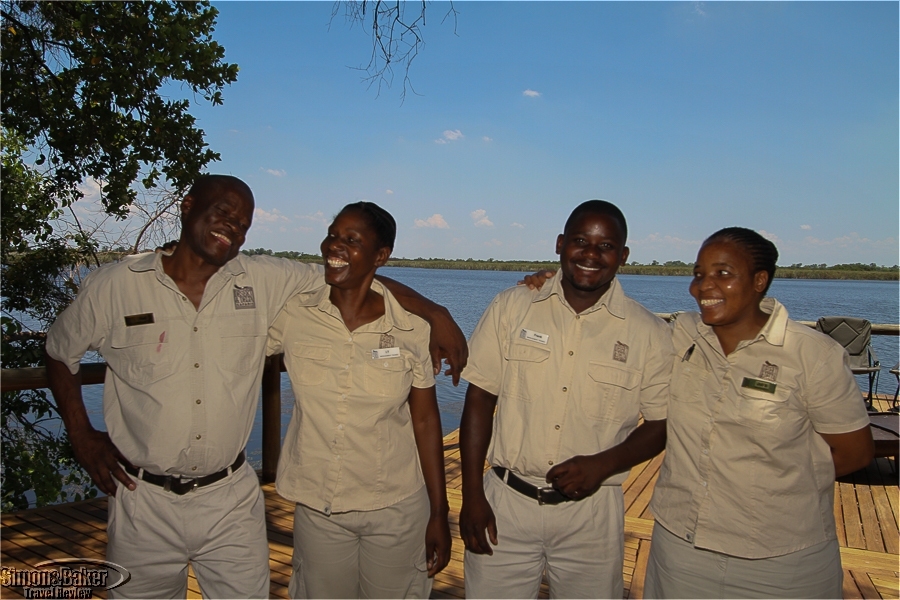
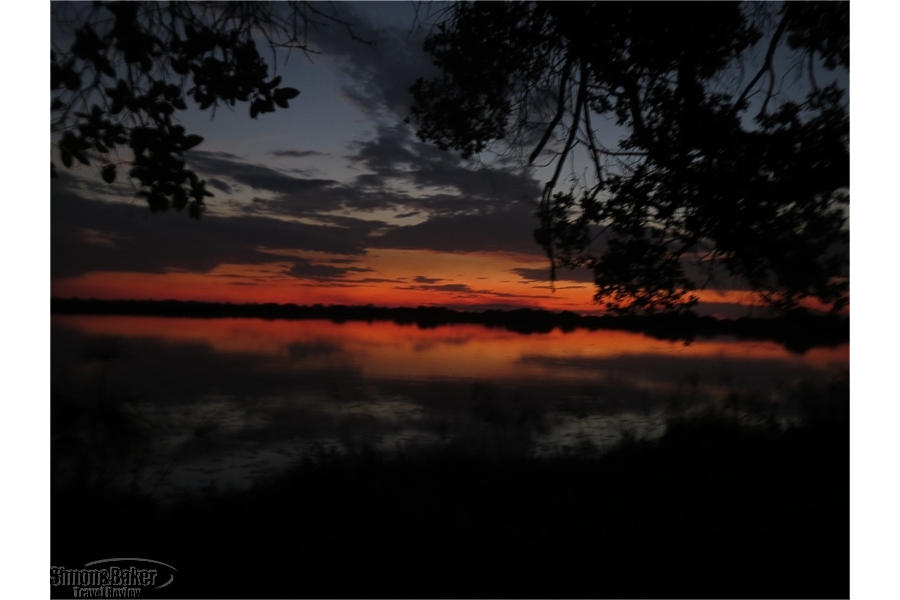
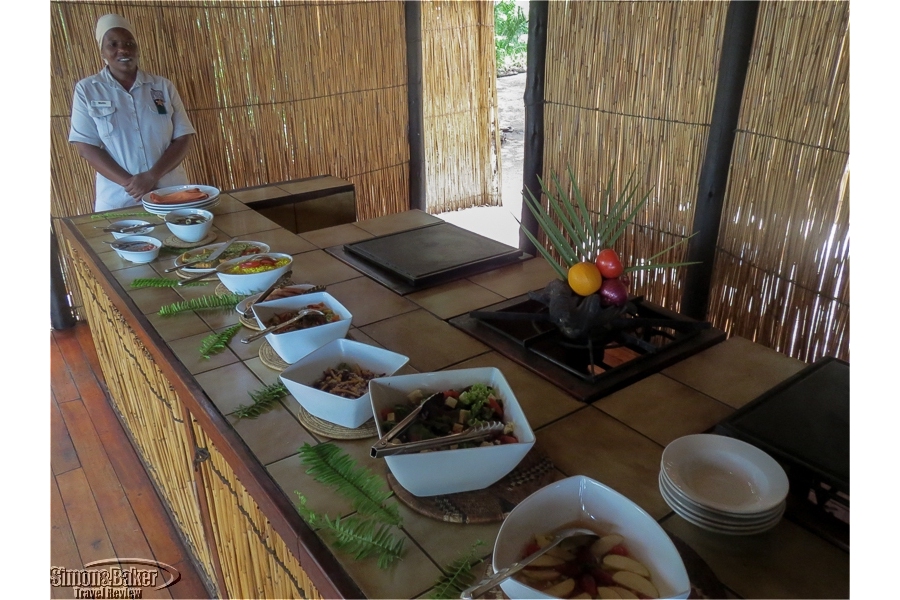
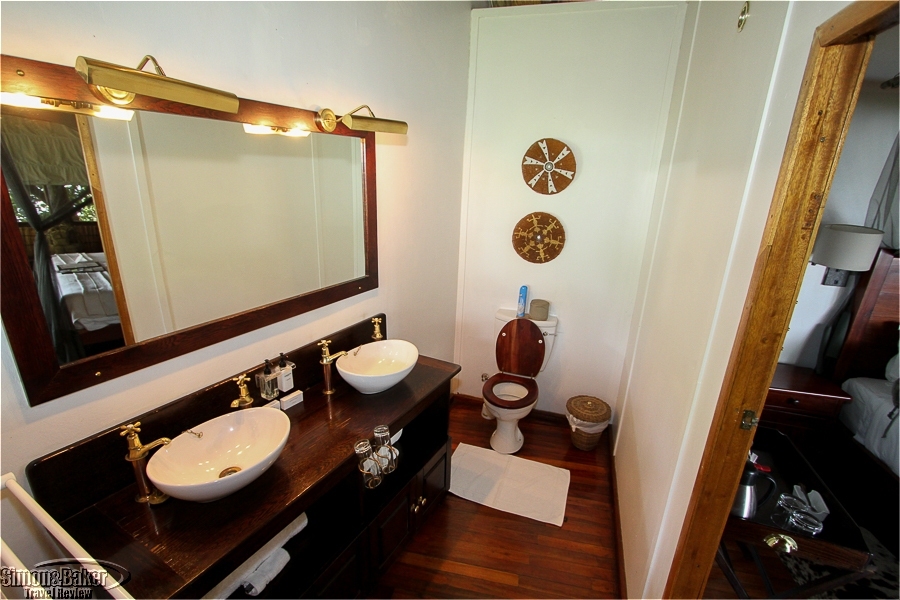
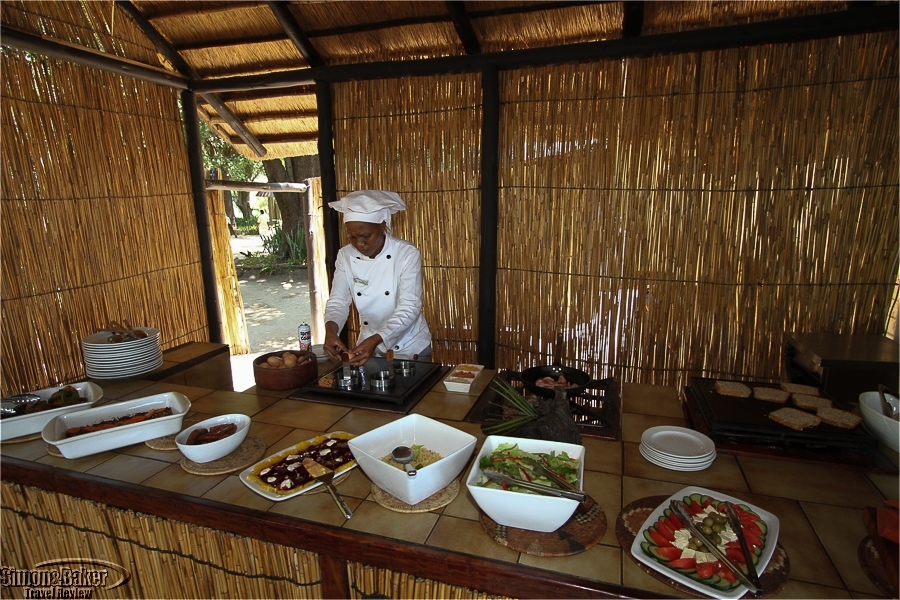
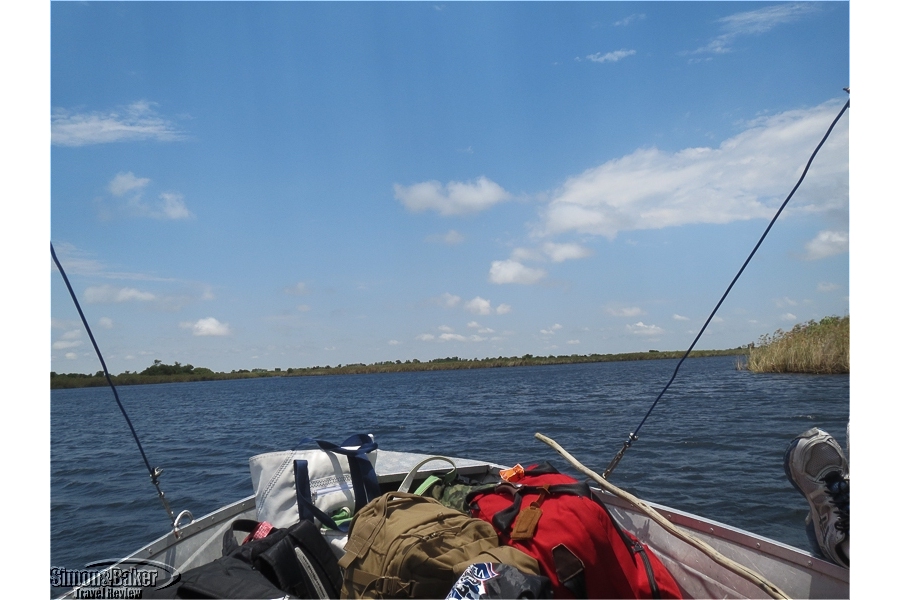

- Overall Impression
- Details
- Common Areas
- Accommodate
- Rooms
- Dining
- Features
- Wildlife
- Activities
- Other
- Review
The X in Xugana was pronounced with a click or like a K. The property name was derived from the bushmen, the original inhabitants of the area, word for warthogs. Seeing unfamiliar animals in the water (hippos) they mistook them for warthogs, which were familiar to them, and called the lagoon Xugana.
It was uncomfortably hot with hardly any respite for the entire duration of our stay. The property, which relied on daytime generator power as its sole source of energy, was not equipped for the intense heat wave that blanketed the region driving daytime temperatures to 45 Celsius (113 Fahrenheit). While a dip in the pool was somewhat cooling there was limited shade in the pool deck and nowhere else that was less hot. Sitting in the over heated tents, which were shut most of the day, was unpleasant. Likewise outdoor seating was debilitating.
The Xugana Lagoon facing property was on a private concession. According to the folder in my room the lodge was the second to be built in Botswana. While at the lodge we saw red lechwe and caught a glimpse of sitatunga, antelopes not present in other places in our itinerary. The waterscapes, water settings and sunset views of the Okavango Delta, spacious common area deck with lagoon views, friendly management staff, buffet meals, and birding opportunities made the visit worthwhile. We also appreciated the well appointed (if very hot) luxury tents, curio shop, computer with slow internet connection for guest use, and refreshing outdoor pool. We would return in a cooler season. We recommend Xugana Island Lodge to our friends who enjoy lush unspoiled waterscapes, sparse game viewing, and excellent birding while staying at an intimate comfort oriented remote safari camp in the Okavango Delta.
Class of Accommodation Luxury Tented Camp
Connectivity There was no cell phone service. There was a one computer for shared guest use in the library with slow (a megabyte, 1-100 kilobytes per second) internet connection.
General Manager Bruce Petty. Four individuals shared management duties while we were there: Julia, Fred, Frank and IT.
Handicapped Access According to a company spokesperson handicapped guests were welcome subject to the following clarification, the property was quite challenging for those on wheel chairs because the there were no wheelchair friendly rooms and pathways, and the activities offered there (boat cruises, mokoro and walking safaris) did not favor people in a wheelchair.
Length of Stay Three nights
Location In a private concession facing Xugana Lagoon near the northern Moremi Game Reserve in Botswana’s Okavango Delta. From the landing strip, it was a 15 minute boat ride to the camp.
Owned and Managed Desert & Delta Safaris, which was owned by Chobe Holdings Limited, owned the lodge. As of August 2015, the directors of Chobe Holdings Limited, a company incorporated in Botswana, were P. M. Van Riet-Lowe, chairman, J. M. Gibson, deputy chairman and chief executive officer, J. A. Bescoby, A. D. Chilisa, B. D. Flatt, R. Gerrard , K. Ledimo, J.M. Nganunu-Macharia, D. S. Ter Haar, and A. M. Whitehouse.
Size The five hectare camp with eight Luxury Tents was in a private concession. There were 29 employees, including five guides, and three boats for water activities.
Year Opened and Date of Most Recent Renovation In 1970, Harry Selby built the lodge, one of the first to cater to overseas photographic safaris. In 2000, Desert and Delta Safaris bought the lodge immediately after its old owners had fully renovated it.
In addition to the water facing deck, the main building was open and housed a buffet section, interior seating area, curio shop, and bar. Common area his and hers bathrooms were a few steps from the bar in a stand alone structure. In front of the bar there was an open platform that served as a fire pit in evening. Next to it, one level lower, there was a floating platform and tents 1 and 2. Twenty feet back from the buffet section there was a stand-alone building with the managers office. Another 10 or 20 feet behind the office there was a raised wood deck with an outdoor pool deck.
Our two tents shared a common entryway from the main pathway. They were set at an angle from each other so that we did not hear the noises from one to the other. Tent 3 faced the lagoon and had a bush and water view from the interior and deck. Tent 4 faced the bush and had a lateral partial view of the lagoon. From my tent I could see the steps and deck of Tent 5, about 10 feet away. I could also hear some of the conversation.
The entrance to our tents was via a few wood steps on the side of each tent. They led onto a wood deck with wooden railing. There was a large tree trunk in the middle of my deck. There were two folding canvas chairs on the side of the deck and a floor mat next to the sliding glass doors (with no lock) that lead to the interior. The lack of a lock was worrisome because aggressive baboons, who knew how to open unlocked doors, visited the camp more than once during our stay. A whole troop walked unafraid around our pathway, tent entryway, lawns and pool deck. A male baboon was confrontational and would not depart until a male manager ran him off from the path in front of my tent.
The tent flooring and deck were made of wood. The tent had two wood walls painted white and the remaining two walls were covered with reed. Large rectangular openings covered with mosquito screening on two walls served as windows. The interior of the tent was shady. Sunlight filtered through the sliding glass door and rectangular openings. In addition, there were two lights attached to the wood above one of the rectangular openings as well as two battery operated lamps affixed to the wall above the wood night tables and a lamp on the desk. Twin beds with wooden headboards sat next to each other in the center of the tent. They had white sheets, medium thickness duvets, and four synthetic pillows. A wood frame with mosquito netting tucked to one side hung above the bed. At night, the staff would spread the mosquito netting to surround the beds. There were two rectangular cowhide floor mats, one by each bed. At the foot of the beds there were two trunks. A rolled up blanket was tethered to each one with leather straps, making it impractical to sit on the trunks. Every day when the staff serviced the tent they placed a pretty leaf or flower arrangement on the beds.
To the right of the bed there was a long rectangular wood bench beneath an adjustable canvas shade. I used it as a luggage rack. In the corner, next to the bench and facing the rectangular tent window, there was a wooden table that served as a desk and a cushioned rattan armchair. In an opening on the desk there were two books, one magazine, and the camp folder. Atop the table there was a tissue box, an ash tray and a lamp. An ivory tone curtain could be extended over the sliding glass door for privacy and a minor respite from the afternoon sun and heat.
On the opposite corner from the desk there was a built-in wood wardrobe with hanging and shelf space as well as a lock box, and a drawer at the bottom. Next to the entrance to the bathroom there was a folding table with a wood tray on top. It had a beverage service on the tray, including a hot water pitcher. The sole items of decoration hung on the walls to the right of the bed and above the beverage tray. One was a black-and-white bush photo. The other was a description of the Legends of Ngamiland (the district where the Delta is located) and the pioneers of the area, including the founder of Xugana Island.
For example, for brunch on our first day there was quiche, red cabbage salad, bobotje (a regional dish), lettuce salad, cheeses, fruit salad and dessert. For dinner our first night there was tasty kudu and chicken (favorites). For dinner on the second night there was lamb with two sauce choices, potato slices in a light cream sauce, rice, salad, and a spicy bean and cabbage dish, Desert was crème brulle (more like a flan)
Bathroom toiletries included Charlotte Rhys disposable shower caps, shower gel, body lotion and conditioning shampoo in refillable plastic containers attached to the walls. The staff offered us moist scented washcloths on arrival at the camp and every time we returned from an activity. There were two cotton bath robes, slippers, flashlight, insect repellent, blow dyer, and lock box for valuables. There was complementary laundry. In the main building, there was a shelf with books and a computer with a slow internet connection for guest use.
Facilities There was an outdoor swimming pool. In the main building, there was a curio shop, a floating platform (near tents 1 and 2), a lounge, water facing expansive deck, and bar.
Pool There was an outdoor pool, 5 meters by 7 meters large and 1.5 meters deep, set on a raised wooden platform. In the pool deck, there were five cushioned comfortable lounge chairs and one umbrella. Towels were kept in a wood container on one corner of the deck. There were beverages (soft drinks, bottled water and beer) in a cooler in another corner of the deck. They were slightly cooler than room temperature because there was no ice in the cooler. One afternoon while we were at the pool one of the staff poured ice in the cooler. Thanks to an automated pool sweeper the pool with mostly free of leaves. There were a few dead insects on the surface. The water clarity was excellent. The bottom was slightly slippery. Because the pool itself was in the sun during the midday break between meals it was best to remain under the shade of the umbrella in the summer heat.
Shop There were curios, branded clothing, cotton scarves, books, and two bottles of South African sunblock. Prices ranged between 7.50 pula for a postcard and 540 pula for a zebra necklace.
Because the park closed at sunset we had to depart immediately after our sun downer stop, heading back to the boats and to the property across the river with alacrity in the dimming light before the sun set was complete.
We saw the following animals during boat rides and walks: elephant, hippopotamus, lechwe, leopard, spotted-necked otter, souther reedbuck, sitatunga, warthog and baboons (in the camp). Among the reptiles we saw Nile crocodile, Nile monitor, and painted reed frog.
We saw or heard the following birds: arrow-marked babbler, black-collared barbet, crested barbet, southern carmine bee-eater, white-fronted bee-eater, little bee-eater, coppery-tailed coucal, black crake, African darter, white-faced duck, cattle egret, great egret, little egret, African fish-eagle, spur-winged goose, black heron, grey heron, ruffus-bellied heron, squacco heron, African hoopoe, African sacred ibis, hadeda ibis, African jacana, lesser jacana, malachite kingfisher, pied kingfisher, woodland kingfisher, blacksmith lapwing, long-toed lapwing, common moorhen, black-crowned night-heron, African open-bill, African paradise-flycatcher, African pygmy-goose, white-browed robin-chat, lilac-breasted roller, black-winged stilt, African stonechat, woolly-necked stork, yellow-billed stork, lesser-striped swallow, water thick-knee, golden weaver, and white-winged widowbird.
Plants we saw: common wild fig, leadwood tree, marula tree, mangoosteen, and blue water lily.
It was also possible to fish for bream and catfish. The latter were known to grow up to 1.4 meters in size. Before our first activity and when there were new arrivals, our guide explained what we would be doing and shared safety guidelines such avoiding swimming in the Delta, not standing up while the boat was moving and never dangling limbs in the water. In case of rain during a boat ride or walk the policy was for the guide to assesses the intensity of the rainfall to decide whether to continue. According to a representative, it was rare for an activity to be called off because of rain. The property had Yamaha 6 meter four stroke boats with a maximum occupancy of eight guests.
There was space on the boats for nine guests. Our boat had a canvas cover which provided partial shade to some of the guests some of the time. We sat on plastic chairs affixed to the boat. There were blankets and life vests on the seats. We used them to cushion the plastic seats. Our primary guide stood at the back driving the boat and our secondary guide sat near him or among us. The boat rides were either speeding through the deep water sections or slow going along the shallow and narrow canals. There was thick underwater foliage in places and sometimes there were hippos hidden beneath the surface. At least once our motor overheated and we had to wait for it to cool down before we could continue on our way back to camp.
The afternoon of our arrival we went on a mokoro ride. Six of us rode with our guides to the landing strip where the canoes were kept. On the way there we stopped a couple of times to observe a crocodile or photograph a flower. During one of the stops, our guide plucked seven water lilies with their stems out of the water and showed us how the inhabitants of the area used to make highly prized water lily necklaces. We were one or two per canoe with a guide who did the poling on very shallow water. From the departure point we went a short distance to get a feel for how local people used to travel along the Okavango Delta. On our return, we watched the sunset while drinking sundowners on the edge of the landing strip before returning to camp at about 6:45 p.m.
The following morning the same six of us left at about 6:45 a.m., heading off on the motorboat to Palm Island, where we walked almost continuously until just after 10 a.m. when we boarded the motorboat to return to camp. Along the way we saw antelope, including a relaxed reedbuck closeup, elephant from several miles away, and warthog. Our guide identified a handful of birds. From a distance, we also saw (the best view was with binoculars) a leopard walking among a herd of red lechwe antelope. We walked at a fast pace over uneven ground to where we had seen the leopard. As soon as it saw us it fled, allowing us a fleeting glimpse as it ran into the bush. It was a clear hot day and the walking wore most of us out. By the time we returned to the boat we were hot and sweaty. We had finished the water in our refillable bottles. In the boat cooler there were several cardboard containers of juice and two 500 milliliter water bottles.
That afternoon we went to the Hippo Pool. We left at 4:05 p.m. and arrived at 5:15 p.m. It was windy and the water was choppy. After spending 10 minutes with two dozen or so anxious hippos, we went to a small nearby island where we saw yellow billed storks and sacred ibis for a few minutes before rushing to catch the sunset on our way back to camp at 6:45 p.m. The following day, we returned to the bird island and Hippo Pool. Strong winds made it difficult to maneuver the boat. Also local fires stung our noses and eyes.
Date of Last Visit November 2015
Reviewers
Article by Elena del Valle
Photos by Gary Cox
Service Our tents were serviced twice daily, in the morning when they cleaned, made up the beds, and picked up laundry; and in the afternoons when they returned clean laundry and made the room ready by enclosing the beds in mosquito netting and turning on the lights. When we arrived at the camp and each time we returned from a game viewing activity uniformed staff welcomed us with a kind word and a cool and fragrant moist facecloth towel for each of us.
Staff were responsive to requests and pleasant. For example, when I asked for a refill of ginger cookies for the cookie jar they baked a fresh batch and filled it. On the first night, my tent was in total darkness when I returned. On the second night, the external light was on and the tent interior was dark. There were plumbing problems in my bathroom on my final night during dinner. One of the staff offered to relocate me to the furthest tent by displacing a staff member staying there temporarily. In the end, the repairmen were able to solve the problem by bedtime.
Would You Stay Again? Yes
Contact Information
- Address:
- Xugana Island Lodge
- Desert & Delta Safaris
- Private bag 310, Maun
- Botswana
- Phone:
- +267 6861243
- +267 6861418
- Fax +267 6861791
- Website:
- Email:
Trackbacks/Pingbacks